Eye problems
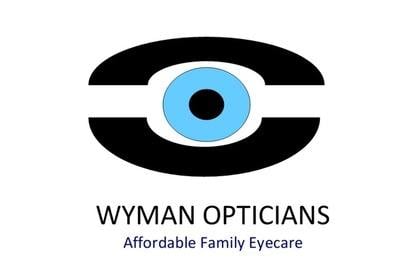
Some of the common eye problems we are looking for;
Myopia.
Blurred vision in the distance, although near vision can be quite good. It usually occurs between the ages of 8-12 years and nearly always before the age of 20. Caused by usually the diameter of the eye being slightly larger or could be a corneal surface that is more powerful than would be ideal. Often the degree of myopia increases as the young body grows rapidly, then levels off in adulthood. During the years of rapid growth growth frequent changes in prescription may be required to maintain clear vision.
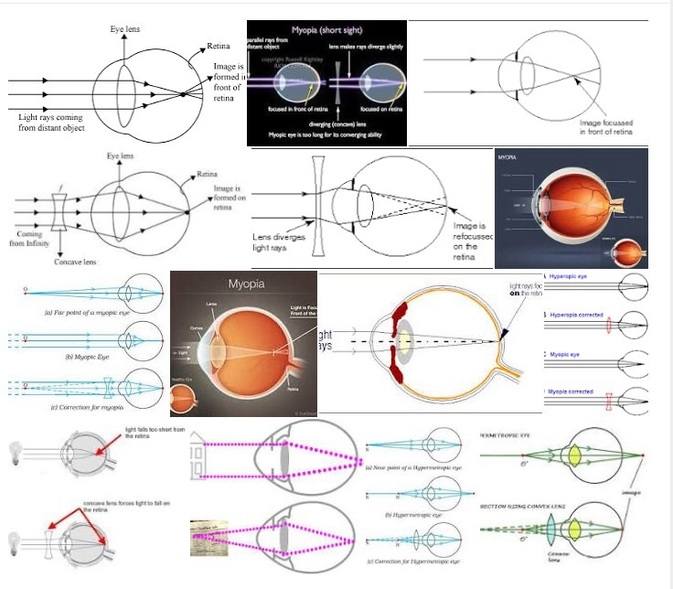
Hypermatropia
This error causes the eyes to exert extra effort to focus on objects close to. This extra effort often causes tension and discomfort several years before the vision starts to get blurred. In very young children moderate to severe amounts of hyperopia can cause an eye to turn, leading often to the onset of a " lazy " eye. This often gets missed if the vision in the other eye is good and the angle of the turn is small.
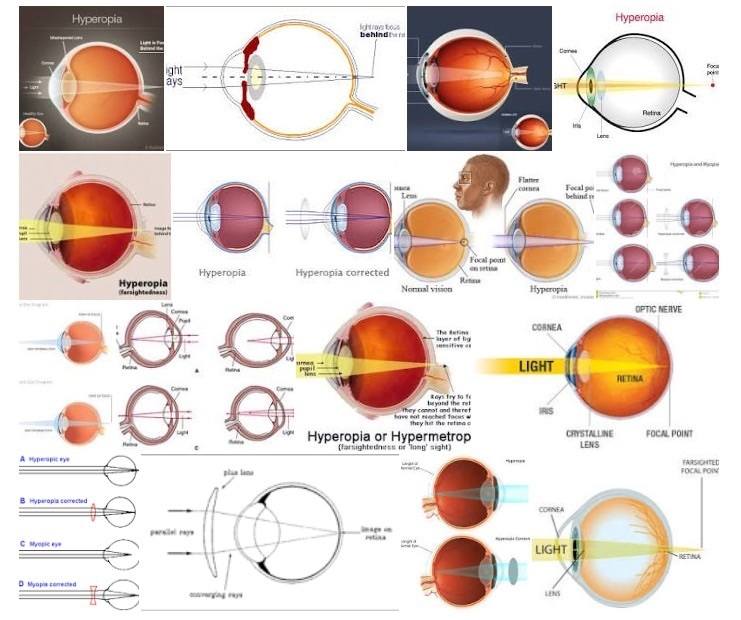
Astigmatism
The symptoms of astigmatism include a distortion or blurring of images at ALL distances. Even though the vision may be fairly sharp when only slight degrees are present, the condition often causes headaches and fatigue out of all proportion to the magnitude of the error.
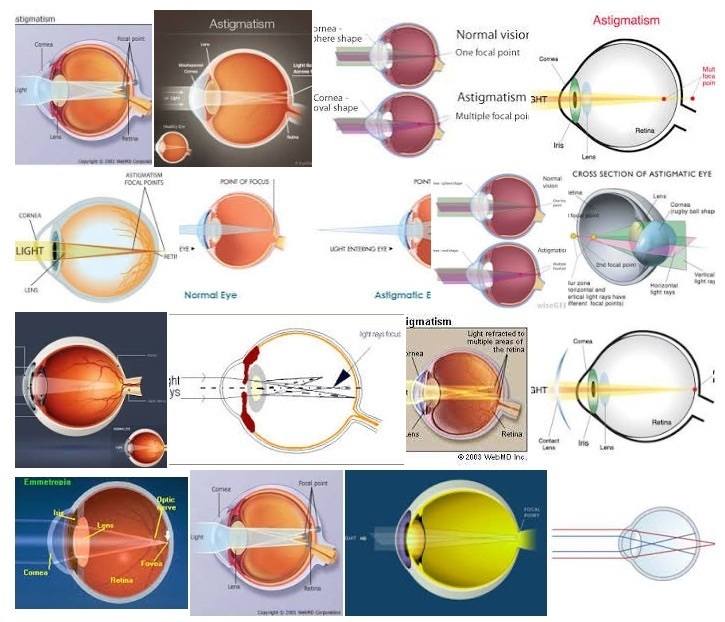
Presbyopia
The most common eye condition of all affecting just about everyone over 45.
This occurs naturally during life as the normally flexible lens in the eye starts to lose its natural elasticity. Thus affecting the ability of the eye to change focus from distant to near objects.
What causes Presbyopia?
As we age, body tissues normally lose their elasticity. A familiar sign of that process is how skin wrinkles as it ages. Our eyes are not immunthe imagres closte to that change. Fortunately like wrinkles, changes in the eyes do not occur overnight, but gradually over a period of years. When you experience this change of vision its the very closest of images that become blurred first. If you don t thread a needle often, the fact that you can t do it anymore won t be obvious until you try. Thats why people are often surprised that the near problems seem so sudden. Its only when this receding near point of focus gets to a distance that we frequently use that we suddenly notice.
The flexiblity of the natural lens actually begins to decrease in youth. The age at which it is first noticed varies but is usually begins to to interfere with the near vision in the early forties. It affects everyone and there is no known prevention of the problem. If you do a large amount of critical close work it seems to occur earlier simply because of the extra strain involved in concentrating for longer periods.
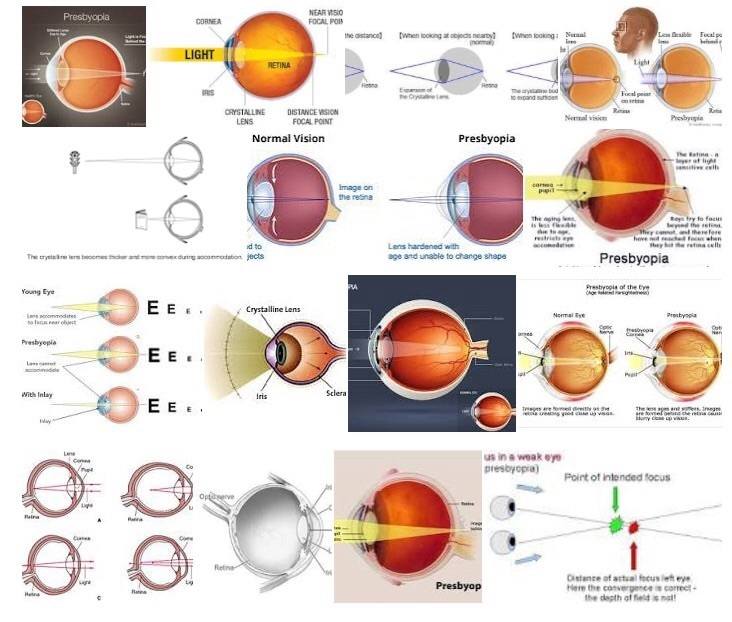
All of the above problems can be dealt with easily with glasses and to a lesser extent with contact lenses.
Unfortunately within the eye itself especially in later life additional problems can occur, more frequently if the general health is also poor.
Another common problem associated with ageing is cataract. this is not a disease as such and though glasses and contact lenses do help, as time goes on they become less effective. The solution is surgery which nowadays is carried out under local anaesthetic.
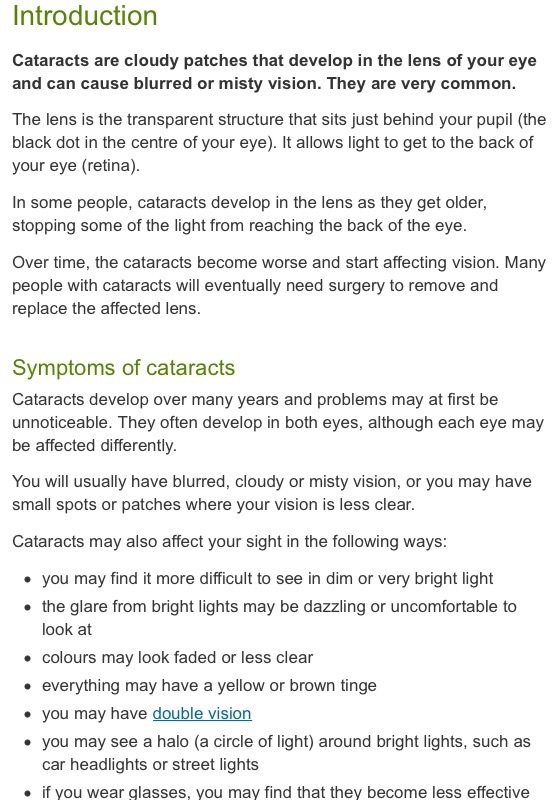
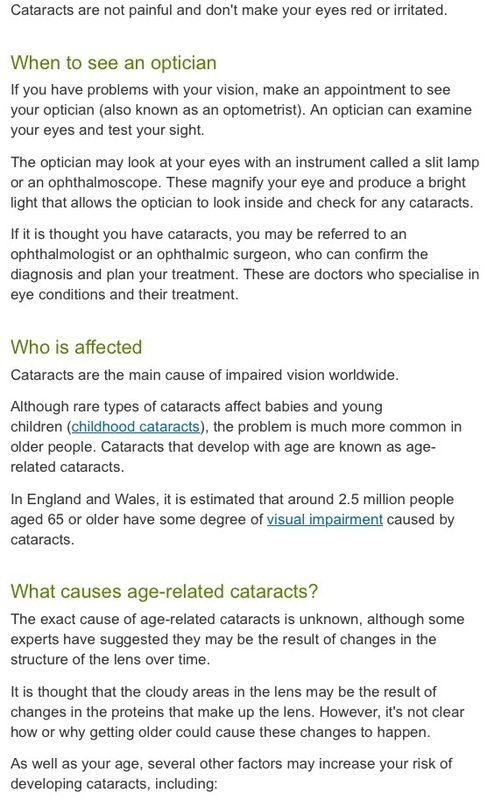
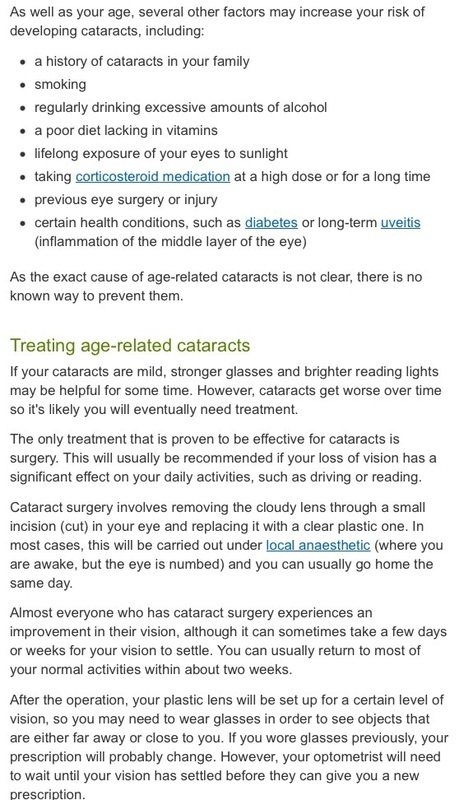
l
As you can see from the above each cataract is different, leading to the vast differences in perception that occur between different individuals.